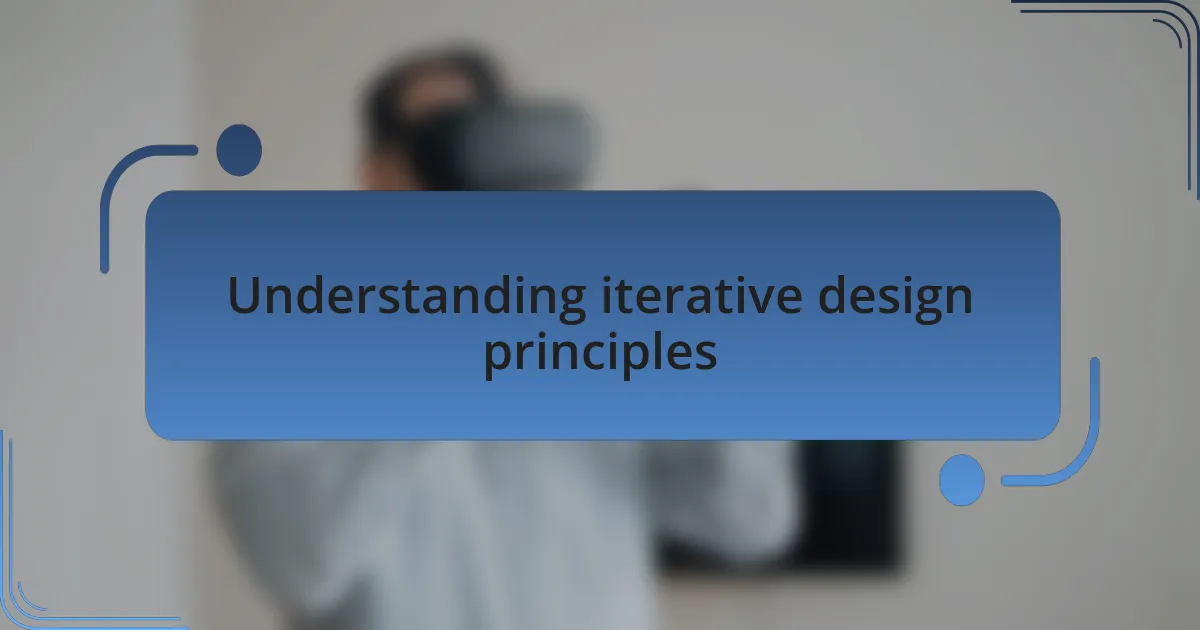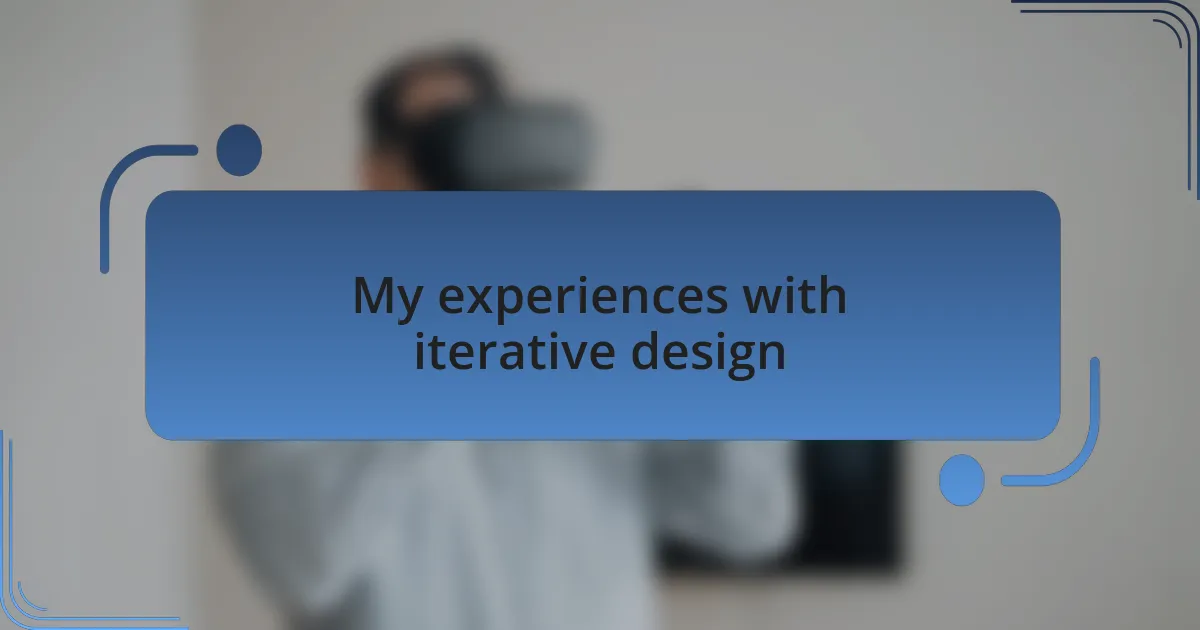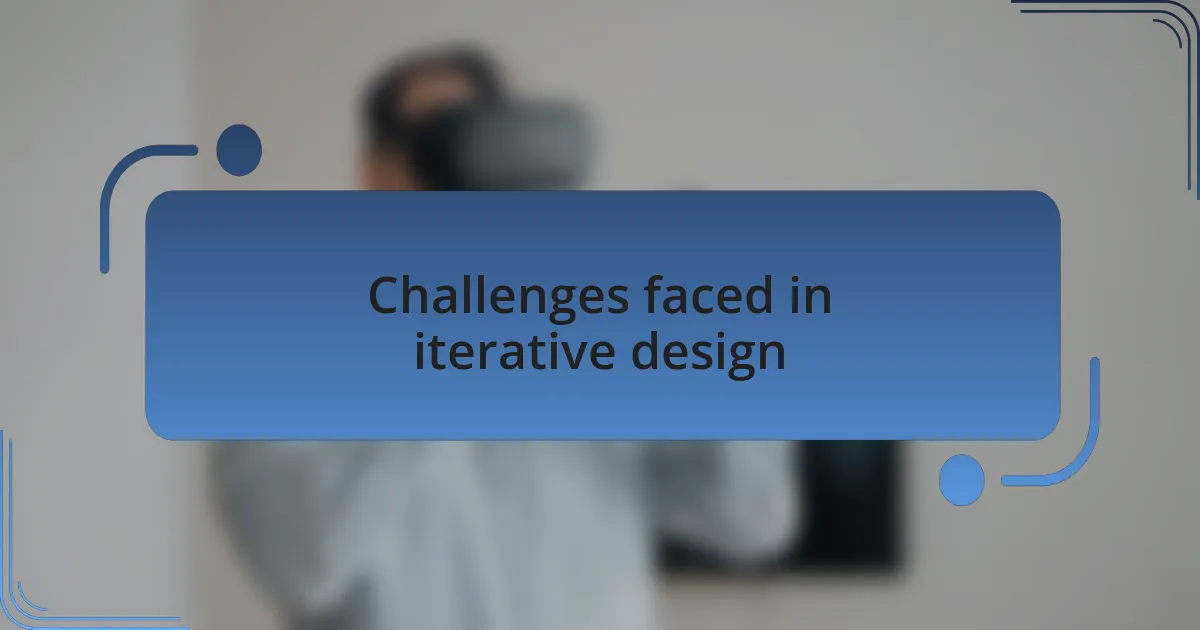Key takeaways:
- Iterative design emphasizes continuous feedback and refinement to align the design more closely with user needs.
- Prototyping early fosters collaboration and uncovers insights that enhance the design process.
- Managing conflicting feedback and avoiding scope creep are significant challenges in iterative design.
- Maintaining momentum throughout the design process is crucial to achieving project objectives.

Understanding iterative design principles
Iterative design principles fundamentally revolve around the idea of improving through continuous feedback and refinement. I remember my first web project where I thought I could nail it in one go. However, after receiving user feedback, I realized my initial design missed the mark completely. Isn’t it interesting how what we envision may not always align with the needs of our users?
At the core of iterative design is the concept of testing and learning. With each cycle of design, I found myself more in tune with user expectations, much like fine-tuning a musical instrument. Have you ever noticed how a small tweak can create a significant difference in user experience? Each iteration allowed me to see my work with fresh eyes, making the design process feel less daunting and more collaborative.
Lastly, the principle of prototyping plays a crucial role in this approach. I used to feel hesitant about sharing drafts too early, thinking I had to present something polished. But I learned that sharing rough prototypes opens the door to a wealth of insights. Why wait until it’s perfect when you can gather valuable feedback that pushes your design closer to excellence from the start?

My experiences with iterative design
I have often found iterative design to be a fascinating journey rather than a linear path. I once worked on a website for a local non-profit and initially sketched out a layout that I thought was stunning. However, after multiple feedback sessions with the team and potential users, I realized that what I thought was visually appealing did not meet their accessibility needs. That moment taught me to prioritize the user perspective over my design instincts.
Another experience that stands out involved a project where I tested different color schemes. I started with bold, vibrant colors that I loved but received feedback that they were overwhelming. Through several iterations, I discovered the power of subtle tones that resonated more with the audience. That process made me appreciate how iterative design allows you to shift focus and adapt based on real-world reactions – a true partnership with your users.
One time, I shared an early prototype of an e-commerce site at a design workshop. The reactions were mixed, and instead of feeling disheartened, I felt exhilarated. The feedback sparked a wave of creativity that led me to improve navigational elements dramatically. Isn’t it amazing how an early draft can invite collaboration and uncover insights that you might have overlooked in isolation? My experience solidified my belief that iterative design transforms not just the final product but the very process of creating it.

Challenges faced in iterative design
Iterative design comes with its fair share of challenges, and one of the most prominent can be managing conflicting feedback. I recall a point during a project when the developers and stakeholders had differing opinions on user interface elements. Navigating these conflicts required me to step back and facilitate discussions, which taught me that good communication is just as critical as the design itself. How do you reconcile these differing views without losing sight of the user’s needs?
Another significant challenge I faced was the potential for scope creep. While it’s tempting to incorporate every piece of feedback, I learned the hard way that it can lead to projects that drag on indefinitely. There was a time I became overly enthusiastic about adding features, which ultimately derailed our timeline. It’s a delicate balance; while iteration is about improvement, too much can dilute the original vision. Have you experienced a similar rush to innovate that went too far?
Finally, maintaining momentum can be surprisingly difficult in iterative design. I noticed that after initial excitement, the energy can wane, leading to stagnation in the project. During one project, we hit a lull after a series of iterations and almost lost sight of our end goal. It was then that I understood the importance of rallying the team and keeping the focus on our ultimate objectives. Isn’t it vital to sustain that initial spark throughout the design process?